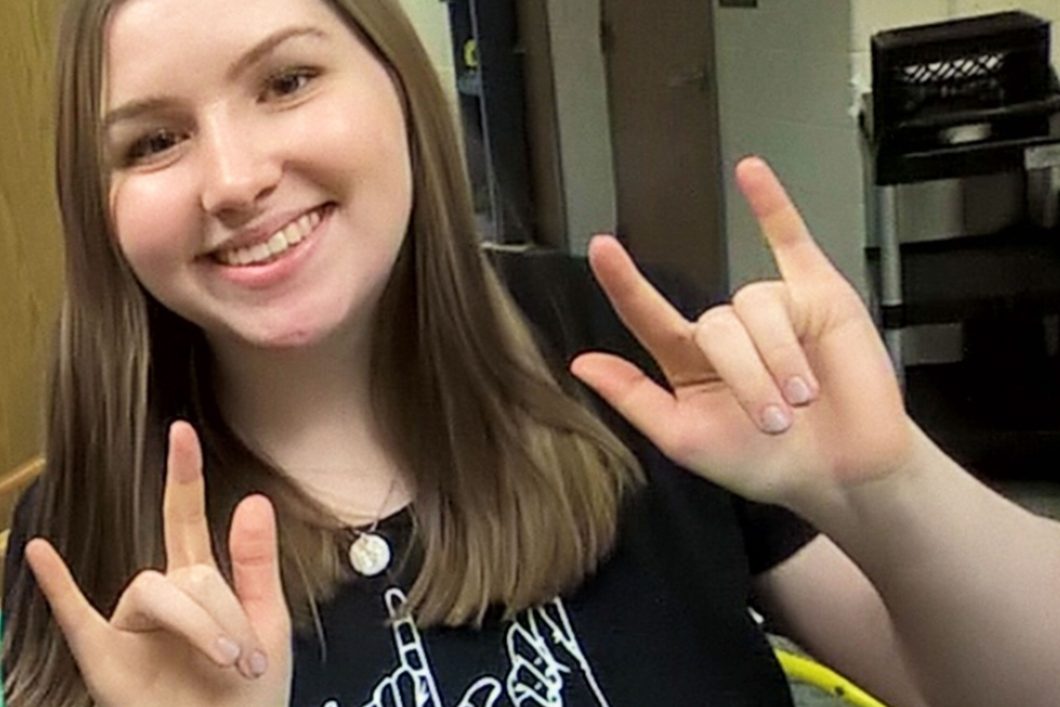In eighth grade, I took a chance on a life-changing opportunity. I elected to take American Sign Language (ASL) to fulfill my language requirement. Little did I know this simple decision would later help me make bigger life decisions.
Fulfilling My High School Language Requirement with ASL
My teacher was deaf, and she had an interpreter who voiced what she signed as we struggled to follow along in this captivating language; therefore, we weren’t allowed to speak or make any noises during class. Because of these conditions, I learned ASL very quickly.
As the year went on, the interpreter spent less and less time voicing because we were able to pick up more signs each day. By the end of the year, we were able to keep up with the teacher in full conversations using ASL.
The next year, I eagerly enrolled in two more ASL classes, and my love for the language grew stronger with each new sign I learned. Not only did I have a passion for it, but people who were fluent in ASL told me I also had a talent for it. After taking 4 years of ASL, becoming a teacher’s assistant for another ASL class, establishing both an ASL club and a National Sign Language Honor Society at my high school, I knew I wanted to continue learning and teaching sign for the rest of my life.
Transitioning My Experience In College
During my freshman year at James Madison University (JMU), I declared my major as communication sciences and disorders—I knew I wanted to work with people who are deaf and hard of hearing. I also joined JMU’s ASL Club. At the start of the spring semester, the club was looking for a volunteer to teach ASL to adults with disabilities and chose me to be a weekly volunteer.
I was anxious and worried before the first lesson. I had no experience teaching ASL to adults, let alone adults with disabilities. I didn’t know what to expect or how to prepare. Another ASL volunteer, Kay, drove me to the meeting place and told me a little bit about the people we were teaching. She had been volunteering for a year, so she had prior experience working with this group. We walked into the room, and the group was all smiles. I’ll never forget how happy and excited they were to learn!
As the weeks went on, I started prepping more lesson plans and teaching more in class. I’d spend hours each week perfecting the topics and vocabulary, along with interspersing games and activities to keep them interested. As a full-time college student who was part of multiple clubs and activities, making the time to create lesson plans became difficult. However, I was as determined to teach ASL as they were to learn it!
Over the semester, our group grew very close, and we looked forward to our weekly Monday meetings. Kay and I taught them topics that would be relevant to them and their lives. Around each holiday, we’d teach them holiday vocabulary, then play bingo with the new vocabulary words. Bingo was their favorite game, and we played it almost every week. We also taught them signs that would come in handy—simple phrases like “How are you?” and “Good morning!”—along with signs to use in case of emergencies.
Seeing this group start with very little ASL vocabulary and build up to remembering 30–40 new words each week was incredible. It was a learning experience for everyone. Not only did the group get to learn ASL, but I ended up learning many new signs, as well.
Solidifying My Decision
By the end of the semester, I didn’t want to leave our class—we had so much fun together! One of my favorite memories is the cards they made me and Kay for our last class. The card had “thank you” on the front in ASL, and they all signed their names on the inside. This experience allowed me to meet wonderful people who asked many questions and who were genuinely motivated to learn ASL. Seeing my students learn and grow made me more confident in my decision to not only learn ASL but to teach this beautiful language to others.


Hi Bailey! My sister is 72. She has cognitive disabilities and very little hearing ability. She’s coming to visit and I thought I’d recommend we learn some ASL together. Do you have any recommendations for ASL resources that target people with learning disabilities? Thank you!